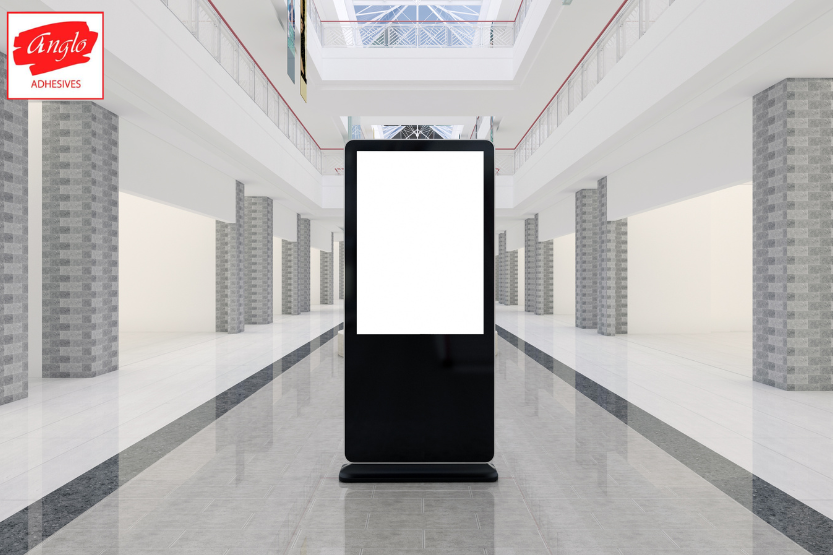Blog
How to Choose the Right Adhesive for Perspex PMMA

Perspex PMMA, also known as acrylic, is a versatile plastic material prized for its clarity, strength, and ease of fabrication. Also commonly referred to as acrylic, Perspex PMMA finds applications in a wide range of industries due to its unique properties. However, when it comes to bonding acrylic, selecting the right adhesive is crucial for achieving a strong, aesthetically pleasing, and long-lasting joint. This article explores key factors to consider when choosing an adhesive for this material’s applications.
Understanding Perspex PMMA and Its Bonding Characteristics
Perspex PMMA offers several advantages for bonding:
- Smooth, Non-Porous Surface: The smooth, non-porous surface of acrylic ensures good adhesion with compatible adhesives. Unlike some materials with a rough or textured surface, this material provides a maximum surface area for the adhesive to grip, leading to a stronger bond.
- Chemical Compatibility: Perspex PMMA is generally resistant to many chemicals, but some adhesives might cause crazing or weakening. It’s important to choose an adhesive formulated specifically for this material to avoid damaging the material or compromising the bond’s integrity.
Matching the Adhesive to the Application
The ideal adhesive for Perspex PMMA depends on the specific application:
- Strength Requirements: For high-stress applications, such as shelves or structural components, a strong structural adhesive is recommended. Epoxy adhesives form a rigid bond that can withstand significant weight and pressure.
- Joint Visibility: For clear bonds and a seamless aesthetic, consider acrylic adhesives or UV-cure adhesives. These adhesives offer exceptional clarity, ensuring the bonded joint virtually disappears, creating a visually stunning finish. This is ideal for applications like signage, display cases, or furniture where a clean, uninterrupted look is desired.
- Material Compatibility: Ensure the chosen adhesive is compatible with Perspex PMMA and any other materials involved in the project. Some adhesives might not bond well with certain materials, leading to a weak or failing joint. For example, a solvent-based adhesive might damage this material, while a cyanoacrylate adhesive might not be suitable for bonding it to other plastics.
- Application Environment: Consider factors like temperature, humidity, and UV exposure when selecting an adhesive. Some adhesives might not perform well in extreme temperatures or high-humidity environments. Additionally, for outdoor applications, UV resistance is crucial to prevent the bond from degrading under sunlight exposure.
Popular Adhesive Options for Perspex PMMA
Several adhesive types excel at bonding Perspex PMMA:.
- Acrylic Adhesives: Acrylic adhesives provide fast-curing, clear bonds ideal for applications where aesthetics are important, such as signage, display cases, or furniture. These adhesives offer a high degree of clarity, mimicking the look of Perspex PMMA itself, resulting in a virtually invisible bond. They are also user-friendly and relatively fast-setting, making them a good choice for DIY projects.
- Cyanoacrylate Adhesives (Super Glue): Fast-acting and user-friendly, super glues work well for small Perspex PMMA repairs, non-structural bonding, or quick fixes. However, they may not be suitable for large-scale applications or those requiring high bond strength. Additionally, super glues can sometimes cause a white residue on the acrylic surface, which might be undesirable for some projects.
- UV-Cure Adhesives: Cured with ultraviolet light, these adhesives offer rapid bonding and minimal fumes, making them ideal for precise applications like electronics assembly or bonding the material to other materials that might be sensitive to heat or solvents. The fast curing time allows for quick project completion, while the minimal fumes make them a good choice for indoor applications.
Surface Preparation for Optimal Bonding
For a successful bond, proper surface preparation is essential:
- Cleaning: Clean the material’s surface with a suitable solvent, such as isopropyl alcohol, to remove dirt, grease, and contaminants. A clean surface ensures the adhesive adheres directly to the Perspex PMMA, maximising bond strength.
- Masking: Use masking tape to create clean lines around the bonding area, especially for clear adhesives. This prevents the adhesive from spreading to unwanted areas and ensures a neat, professional finish.
- Abrading (Optional): For some adhesives, particularly mechanical epoxies, lightly abrading the material’s surface with sandpaper or a scuff pad can improve adhesion strength. This creates a slightly rougher surface for the adhesive to mechanically grip onto. However, it’s important to use a fine-grit sandpaper to avoid scratching the acrylic surface.
Application Tips for Flawless Perspex PMMA Bonding
Here are some key application tips for optimal results:
- Follow Manufacturer’s Instructions: Adhere to the specific instructions and recommended cure times provided by the adhesive manufacturer.
- Apply Even Pressure: Maintain consistent pressure on the bonded Perspex PMMA pieces during the curing process.
- Clamp or Jig (Optional): For some applications, using clamps or jigs can ensure proper alignment and pressure during curing.
Safety Considerations When Working with Adhesives
Always prioritise safety when working with adhesives.
- Read Safety Data Sheets (SDS): Familiarise yourself with the potential hazards and recommended safety precautions for the chosen adhesive.
- Proper Ventilation: Ensure adequate ventilation in the workspace to avoid inhaling harmful fumes.
- Use Appropriate Personal Protective Equipment (PPE): Wear gloves, safety glasses, and respiratory protection as recommended.
A Crystal-Clear Choice
By carefully considering the application, material compatibility, and desired aesthetics, you can choose the right adhesive for Perspex PMMA. Anglo Adhesives offers expert solutions to ensure proper surface preparation techniques and application tips, resulting in a strong, long-lasting, and visually appealing bond. With Anglo Adhesives‘ high-quality products and guidance, your acrylic projects will achieve a crystal-clear brilliance that shines through.